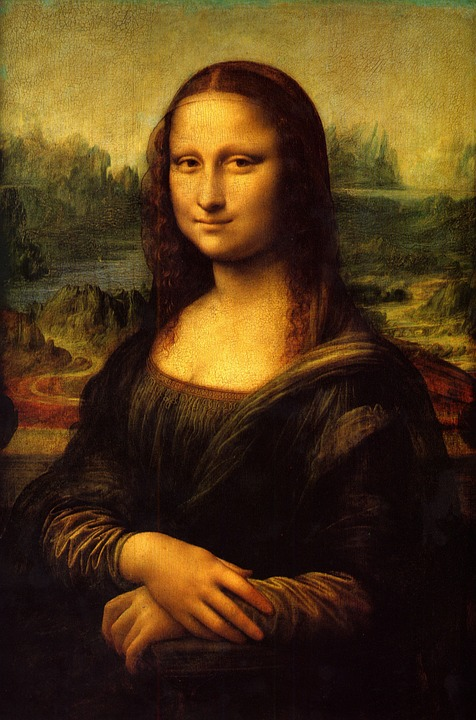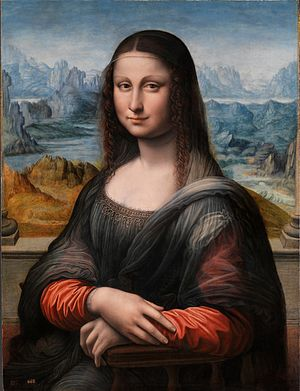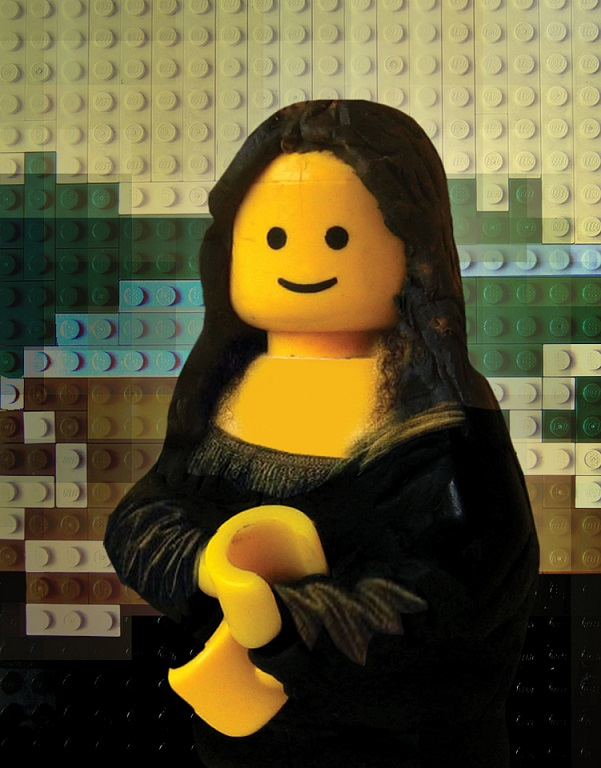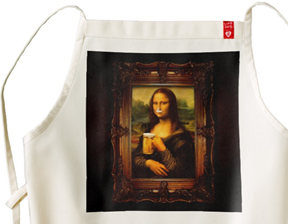Chasing Beauty: Aesthetics, Society and Science
The Theory of Beauty
MINDS ON
“
Everything has beauty, but not everyone sees it.
~ Kong Qiu, Chinese Philosopher (also known as Confucius).

In the local gallery there is one of your favourite paintings by Picasso. It has been in the gallery for twenty years and has helped to attract countless visitors. The curator and other art experts have written about the aesthetic qualities of this painting and how it fits in with Picasso’s Cubist art. It has toured other galleries and is insured for millions of dollars.
Imagine then that a woman comes forward and can demonstrate that she, in fact, painted this ‘Picasso.’ It turns out that she is an exceptionally brilliant forger - and this is an excellent forgery.
Putting aside that the painting is financially devalued, the question we propose to you is this: has the aesthetic value - the capacity to elicit pleasure from its beauty - been diminished, now that it is known that this painting is not a real Picasso?
 The Forgery - A Thought Experiment
The Forgery - A Thought Experiment
Consider the following:
- Art experts for twenty years praised this painting’s aesthetic qualities when they thought it was by Picasso. Does or should the aesthetic value of the actual painting change now that we know it is a forgery? Remember, nothing physical has changed about the painting - just its authorship has changed. Explain your reasoning.
- For twenty years, this was one your favourite paintings...when you thought it was by Picasso. Has your level of admiration changed now that you know it is a forgery? Explain your reasoning.
ACTION
Defining Aesthetics

Aesthetics is the philosophical study of beauty and taste. It deals with the meaning, perception, and nature of beauty. It concerns itself with questions relating to the nature and source of art. Aesthetics is also about the appreciation, and the creation, of art works.
Ultimately, aesthetics is the field of study in which we constantly interrogate our sense of beauty - and the category of beautiful - as applied to all things "created" and natural. It is about what constitutes “taste.” It is how we are able to say that one object is more beautiful than another object. It is what we use to set a standard for beauty against which we judge all manner of things and people.
And therein lies the problem - how does one, and how can one, define beauty? How, where, and who did we get this standard from? Is something inherently and independently beautiful, or does it need the gaze of the outsider to define those qualities and pass judgement?
To begin our introduction to aesthetics, watch the following video by PBS’s Crash Course - Aesthetics:
Judging Beauty
Think about the last time you declared that something was “beautiful.” How did you make that judgement? What informed your opinion?
For example, which rainbow below is more beautiful?
Reflect on how you made that judgement. What reasoning did you use to declare one rainbow “more beautiful” than the other?
Now, take a moment and informally poll a few of your classmates, or ask a few friends or family for their opinions. Was everyone in agreement with you - or did some people choose the “other” rainbow?
The quality of beauty is often defined as that which is pleasing, either to the senses or to the mind. The concept that something can be “beautiful” is universal: we seem to collectively agree that there is a quality or characteristic that a thing or being can have that we call “beauty.” However, how do we come to this conclusion?
Are aesthetic judgements subjective(definition:Based on, or influenced by personal feelings, tastes, or opinions.) or objective(definition:A judgement not based or influenced by personal feelings or opinions.)?
ObjectivevsSubjectiveBeauty
Other Lenses
Some beliefs regarding beauty don’t fit neatly into the subjective/objective dichotomy.
For example:
- According to Islam, human works of art are inherently flawed compared to the work of Allah, and to attempt to depict in a realistic form any animal or person is insolence to Allah. Hence, many Islamic artworks focus on architecture, mosaics, geometric and floral patterns, all with the intent to reinforce the awareness of God.
- Rasa, Sanskrit for juice, or flavour, is the East Indian concept of aesthetics. It bridges both the subjective and objective as it speaks of an essential “element” in art that moves us emotionally, yet cannot be described. It seeks to answer why fictional works (such as plays, for example) can evoke real emotions.
- In the Analects, Confucius proposed that the hallmark of good art, such as poetry or painting, should be its effectiveness in promoting virtuous traits, which lead to a harmonious society.
- In Taoism, Wu Wei (non-doing) promotes non-volitional action - acting in a way that is in spontaneous alignment with the cycles of the natural world. Artwork of this period was more spontaneous, free, stylized, containing elements of Yin and Yang, (definition:Yin represents the feminine, as well as darkness and passivity. Yang represents the masculine, as well as brightness and energy.) with the intent of bringing the artist closer to the flow of nature: Wu Wei - “The Way.”
- Friedrich Schiller (1759 - 1805 CE) believed that the aesthetic appreciation of beauty is the most perfect reconciliation of the sensual and rational parts of human nature.
- American feminist art philosopher Marilyn French (1929–2009 CE) noted that with the predominance of male philosophers historically, not much had been said of a feminine aesthetic - she even questioned if there was one. Creating art with a female perspective, and having the audience understand such artworks without the filter of the male gaze, (definition:The male gaze is the way in which the visual arts and literature depict the world and women from a masculine point of view, presenting women as objects of male pleasure.) would take generations of female artists to achieve.
 Resources
Resources
Using any or all of the three links below, explore further by reading more about specific philosophers’ perspectives on aesthetics. You can also contact your local library for access to these resources in other formats:
- Internet Encyclopedia of Philosophy
- Meta-Encyclopedia of Philosophy
- Stanford Encyclopedia of Philosophy
Use the philosophers’ names and their writings as titled below to begin your research:
- Aristotle’s Poetics
- Hume’s Of The Standard of Taste
- Dewey’s Art as Experience
- Nietzsche’s The Birth of Tragedy
- Danto’s After the End of Art
- Tolstoy’s What is Art?
- Dickie’s Art and the Aesthetic
Is Aesthetics a Matter of Taste?
“
No object is so ugly that, under certain conditions of light and shade, or proximity to other things, it will not look beautiful; no object is so beautiful that, under certain conditions, it will not look ugly. I believe that in every twenty-four hours what is beautiful looks ugly, and what is ugly looks beautiful, once.
~ Oscar Wilde, (1854-1900), British author, Lecture to Art Students.
Aesthetic taste is the ability to recognize the aesthetic features of an object.
Hume had much to say on the matter of taste, contending that some people were not educated enough to have a refined sense of judgement.
Indeed, the terms “good taste” and “bad taste” often have implied classism(definition:Prejudice against or in favor of people belonging to a particular social class.), with “poor taste” generally viewed as that which is mass-produced, unrefined, cheap, even vulgar and offensive. As a society, we often hold each other accountable for our tastes, commending people for having “good taste” in fashion, food, and other luxuries - condemning people if we deem their tastes as being inferior in some way.
The Mona Lisa, painted by Italian artist Leonardo Da Vinci, has often been considered the most famous painting in history. Yearly, a multitude of people travel to the Louvre to see this famous portrait. It is also documented that no painting has been reimagined and recreated as often as the Mona Lisa. The Mona Lisa, is, for many, the epitome of "good taste," an invaluable artistic masterpiece.
And then, there are the reproductions.
The Mona Lisa's image - because it is in the public domain - can be found on everything from bathmats to T-shirts; it has been mass-produced as a poster to be hung on a school dorm wall, as well as parodied in comic form using LEGO.
The reproductions can vary from eerily accurate to kitschy homages. Even some of Da Vinci's students made their own versions of the famous painting.
So how far from the original artwork must a reproduction be in order to be classified as bad taste?
Good taste or bad taste? Leonardo da Vinci (first slide) or Lego Mona Lisa (third slide)?
While this may not seem at first glance to be an issue, consider this: can a person with poor taste make a valid aesthetic judgment? Depending on whether you believe that aesthetics are subjective or objective, the answer will vary - and in the next activity, this sense of entitlement often determines who gets a say in what is, or isn’t, art.
 The Narrow Aesthetic of Human Beauty
The Narrow Aesthetic of Human Beauty
Is there any more contentious issue regarding aesthetics than that which defines human beauty?
Each of these images in the interactive below present a perception of beauty through an artistic lens and medium. They engage concepts of beauty, form, medium, and audience, as well as how and what art and its subject(s) signifies.
Consider each of these images, as well as the words of the models, separately. Be methodical and as objective, as possible. As you refer to details in the work, use the questions below to guide how you engage with these images. Archive your responses in your Philosopher's Notebook.
- What is the central subject of the image? Why do you think so?
- What does this image appear to be saying about its subject?
- How do constructed Western notions of beauty affect how you view the subjects?
- What do the form, content, and context of the subject suggest about the systems or notions of beauty that are being represented or resisted?
- In what ways does the medium of photography present the models differently than another medium?
- What do you believe to be the message of this image?
- Is there something else that the photographer is trying to represent or capture beyond the physical subject?
- What is your personal sense experience of the image?
- Does this object give you pleasure: if so, is that a function of its beauty; if not, is that a function of its want of beauty?
TheNarrowAestheticofHumanBeauty
 The Narrow Aesthetic of Human Beauty
The Narrow Aesthetic of Human Beauty
Choose one of the following key questions and through research, readings, and personal experience, construct a response.
- Be thorough - look at this issue from a myriad of perspectives.
- Be aware of the duplicity between what we as a society say we believe, and how we really respond to the human form in all its variations.
Key Questions
-
What role do factors that shape you, such as family, social, cultural existence and experience, etc., have on what you experience as beautiful?
- How do we assess or evaluate human attractiveness or value that falls outside the parameters of conventional Western notions of beauty?
- Is beauty measurable and can that scale be universally applied?
- What value is there in judging beauty in the human form?
-
Is beauty an absolute?
- Can the standards of beauty from diverse cultures be compared? Are there universal standards of judgement?
- How does the prevalence of Western media globally, disseminate a particular standard of beauty? Do the intentions of the makers of art matter?
- How could disproportionality (definition:Disproportionate representation, or disproportionality, refers to the over- or under-representation of a given population group, often defined by racial and ethnic backgrounds, but also defined by socioeconomic status, national origin, English proficiency, gender, and sexual orientation, in a specific population category. ) be a factor in the judgement of what is beautiful about the human form?
- Historically, makers of art have been principally male and culturally dominant. What kind of impact might this have had on the history of aesthetics? On our current perceptions of beauty in the human form?
-
What objectively informs our subjective awareness of beauty in the human form?
- Tastes in “what’s in” change over time. For example, consider the “ideal” female body shape: from the hourglass figure accentuated by corseting in the Victorian period to the thinner, boyish figure of the 1920s. If the “ideal” can change based on the time period and social expectations, is beauty completely subjective?
- If beauty is completely subjective, then why do people adhere to a notion of what is “ideal?”
-
Are standards of beauty different for different genders?
- Why do people desire physical beauty?
- Do different genders follow universal standards for judging beauty in the human form?
- Can patriarchal expectations of notions of beauty, directed at women, limit and control them?
- When standards of beauty are defined only by the binary, how does this adversely affect those who are gender diverse?
Finally, propose what needs to happen in our society to develop an inclusive standard for human beauty.
 A Matter of Taste - The Aesthetic Experience
A Matter of Taste - The Aesthetic Experience
What makes something beautiful? Are standards of beauty subjective, as Hume argues, or can there be universal agreement on something's beauty, as Kant claimed? How much of what we define as “beautiful” is only so because of social constructs?
Your Task:

Create a visual mind-map, flow chart, or infographic that demonstrates your understanding of aesthetics and its defining principles.
Step 1:
From each of the four categories listed below, pick one example of something in that category that you perceive to be beautiful.
| Fine Arts | Natural Beauty | Human Beauty | Everyday Object |
|---|---|---|---|
|
|
|
|
Step 2:
For each example you chose, choose a philosopher/mindset through which you will define its beauty. For example, if you chose an image of a “mother and child” and had to explain why it is beautiful, according to the principles of a feminine aesthetic, how would you define its beauty? What criteria would inform your judgement?
Choose one aesthetic principle/philosopher for each one of your examples of ‘beautiful.’ Please note, you must use a different principle/philosopher for each example (four objects/four principles or philosophers).
- Aristotle/Plato’s Forms
- Baumgarten’s Lectures on Aesthetica
- Edmund Burke and the Sublime
- John Dewey’s Theory of Aesthetic Judgment
- Dickie’s Art and the Aesthetic
- Feminine Aesthetic
- Friedrich Schiller
- Martin Heidegger’s Theory of Phenomenology
- Jungian Aesthetics
- Immanuel Kant
- Kintsukuroi
- Susanne Langer’s Theory of Cultural Importance in Art
- Georg W.F. Hegel
- David Hume and his Aesthetics Based on Moral Philosophy
- Frances Hutcheson and the Subjective and Personal Nature of Aesthetic Judgment
- Friedrich Nietzsche’s Dionysian and Apollonian Principles
- Arthur Schopenhauer and Aesthetic Pleasure
- Tolstoy and Art’s Connection with Life
- Rasa
- Wu Wei
Step 3:
Create a mind map, flow chart, or infographic that includes an image of your chosen subject, a written description that defends why you consider it an example of beauty, and an explanation as to how the chosen aesthetic principle supports and confirms that this object can be defined as “beautiful.”
Remember to cite your sources in APA format.
CONSOLIDATION
What is More Beautiful?
the Painting of Mont Saint-Victoire?

or the Photograph of Mont Saint-Victoire?

If presented with a choice between the painting or the photograph of the same location, which would you say is more “beautiful?”
An odd question, perhaps, but think about it for a moment - what criteria would you use to make that judgement?
- Does the medium used (paint or photography) to capture beauty count?
- Cézanne is a renowned artist and the photographer is anonymous. Does the prestige of the artist affect the appreciation of the landscape?
- Can a found or natural object be as beautiful as one created by an artist?
- If it hangs on a museum wall, is it art? If not, what criteria would you use to define what makes each photo “artistic” and/or “beautiful?”
- It has been said that great art comes from some source of inspiration. From what source would the inspiration come for a “beautiful” photo of a natural scene?
- How much the artwork sells for - does that define it as beautiful?
- Whether it was “Instagram”-worthy? Does that make it beautiful?
So many possible factors, right? Any or all could be factors - and, this is for something whose aesthetic value we don’t often stop to consider.
 Philosopher’s Notebook
Philosopher’s Notebook
In your Philosopher’s Notebook, take a moment to reflect on your mind map, flow chart, or infographic and this query about the painting of Mont Sainte-Victoire or the photograph.
- Where do stand on this question about judging beauty?
- Were there any aesthetic principles that seemed “more right” to you than others when defining beauty?
- How do you think your personal understanding of what is “beauty” affects your worldview?
- From where do you think your personal concept of beauty comes?
Reflect on this and make an entry in your Notebook. Don’t forget to archive a copy of your mind map in your Notebook, as well.





